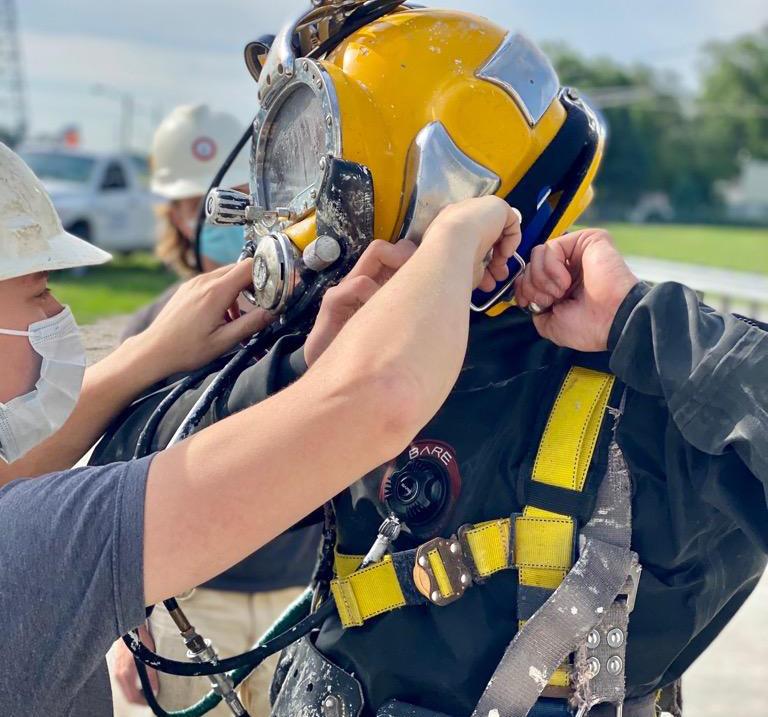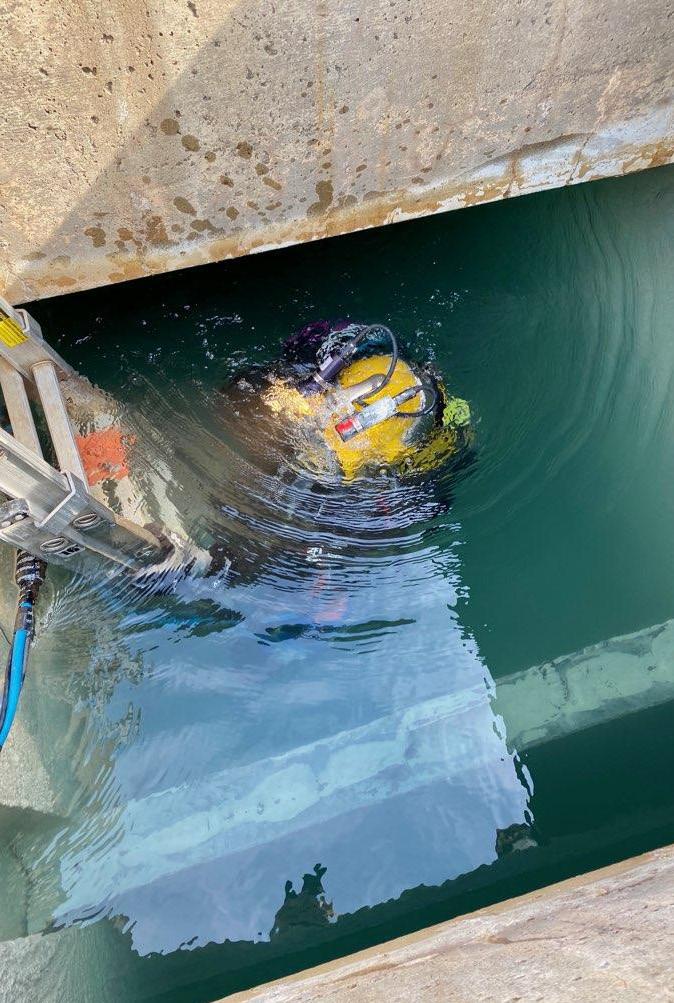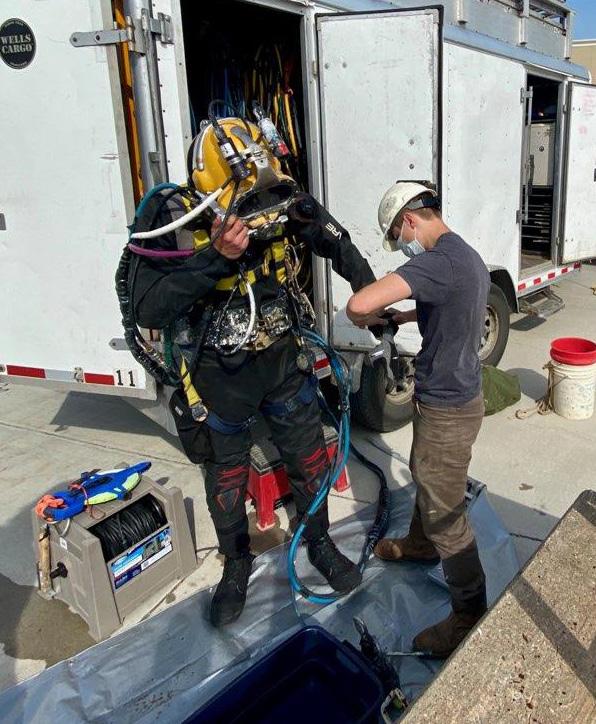
2 minute read
FLORENCE DIVERS
Just before the Memorial Day weekend, with the sun starting to heat up, there was a different kind of pool day at the Florence Water Treatment Plant. With a small splash and some hightech gear, a diver entered Basin 2, slipping below the surface and disappearing out of sight.
The diver is from Liquid Engineering, a company based in Montana, who spent two days at the site. The four-man crew helped prepare for the next major project at the facility. Corey Key, a commercial diver from Little Rock, Arkansas, has been on dive locations from Alaska to Florida. “We do mostly potable water, water treatment plants, tanks, towers, anything with drinking water. We also do bridge and dam inspections and occasionally some underwater construction.”
The highly trained dive team can give a clear picture of parts of the plant that no one ever gets to see. Special equipment allows the diver to give real-time video and audio right to the mobile control room, reading back precise measurements from 10 feet below the surface, and hundreds of feet away.

At Florence the divers were getting confirmation measurements on seven large gates that will be replaced under the next phase of the capital improvements approved by the District’s board of directors.
The project will cost just over $3 million. Mike Koenig, director, Water Production and Pumping, said getting extra trained eyes below the surface is crucial to keeping things on track. “The divers go in and hand measure each one of those gates front and back, and the measurements will be sent to the manufacturer to complete the gates.”
Project leads say Basin 2 will be drained sometime in September, then the gates will be ready to install in October. As for the rest of Basin 2, it will receive a similar rehabilitation to what Basin 1 underwent in 2019 with surface preparations and new shotcrete sidewalls and joint sealants.

Mike said there will be a brief plant shutdown in October to complete the gate installation and the entire project is vital to the continued success of the Florence Plant. “It ensures the integrity of the plant as these are important basins to the treatment process. It ensures the longevity of the concrete inside of them and allows us to isolate them for future maintenance and inspection.”
Overall the project is just the latest chapter in Florence’s long history of producing high-quality drinking water for Omaha and surrounding communities. Mike said, “Being that it’s evolved since the 1880s, and these two basins are still in play from the original 1800s is a testament to how well the plant has been maintained and used over the years.”


